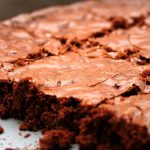What Binge Eating Episodes Have in Common by Joan Kent, PhD
What Binge Eating Episodes Have in Common
By Joan Kent, PhD
Not all binge eating looks the same. And I say that despite the DSM-5 criteria for Binge Eating Disorder.
Binge eating disorder is the most common eating disorder in the U.S. It’s characterized by recurrent and persistent episodes of binge eating. The episodes feel out of control. They’re also linked with distress regarding the bingeing, and with 3 or more of the following:
• Eating much more rapidly than normal
• Eating until uncomfortably full
• Eating large amounts of food when not physically hungry
• Eating alone due to embarrassment over the quantity of food eaten
• Feeling disgusted with oneself, depressed, or guilty afterward.
In bulimia, the above behaviors are typically compensated for by purging. But purging behaviors are either absent or only sporadically used in binge eating disorder.
Diagnostic criteria aside, I’ve observed different types of bingeing, in my clients and in the participants in my doctoral research study.
Some episodes fit the above criteria with dead-on accuracy. Others vary – in the quantity of food eaten, or in the “speed” with which it’s eaten. Or sometimes in the duration of the binge.
That last variation allows me to include something I call a “binge day.” Participants in my doctoral study kept food logs and were instructed to circle anything they considered a binge. A number of them, on several occasions, put a circle around the entire day’s food log. That was a Binge Day.
What’s Up with Binge Days?
The quantity of food over the entire Binge Day was typically quite large, but at no particular time of day did they binge by standard criteria.
Yet these days happen too often and for too many clients for me to ignore them.
What do those binge days have in common with DSM-5 binge eating episodes? The eating feels out of control.
And here’s what I’ve observed in my study and in my practice: Bingeing – “traditional” or otherwise – is often triggered by sugar.
Participants in my low-sugar group improved more than either the low-fat group or the controls in the number of binge episodes, the food quantity eaten, the number of cravings, and the intensity of the cravings.
If you struggle with binge eating episodes, the #1 best thing you can do is stop eating sugar.
If you need help dealing with cravings or quitting sugar, that’s what I do. Just visit www.LastResortNutrition.com and request your free Craving Crusher Consult. Find out how easy it can be to take back control of your eating. It works – and you can do it.
Brought to you by Dr. Joan Kent, best-selling author of Stronger Than Sugar: 7 Simple Steps to Defeat Sugar Addiction, Lift Your Mood, and Transform Your Health.



